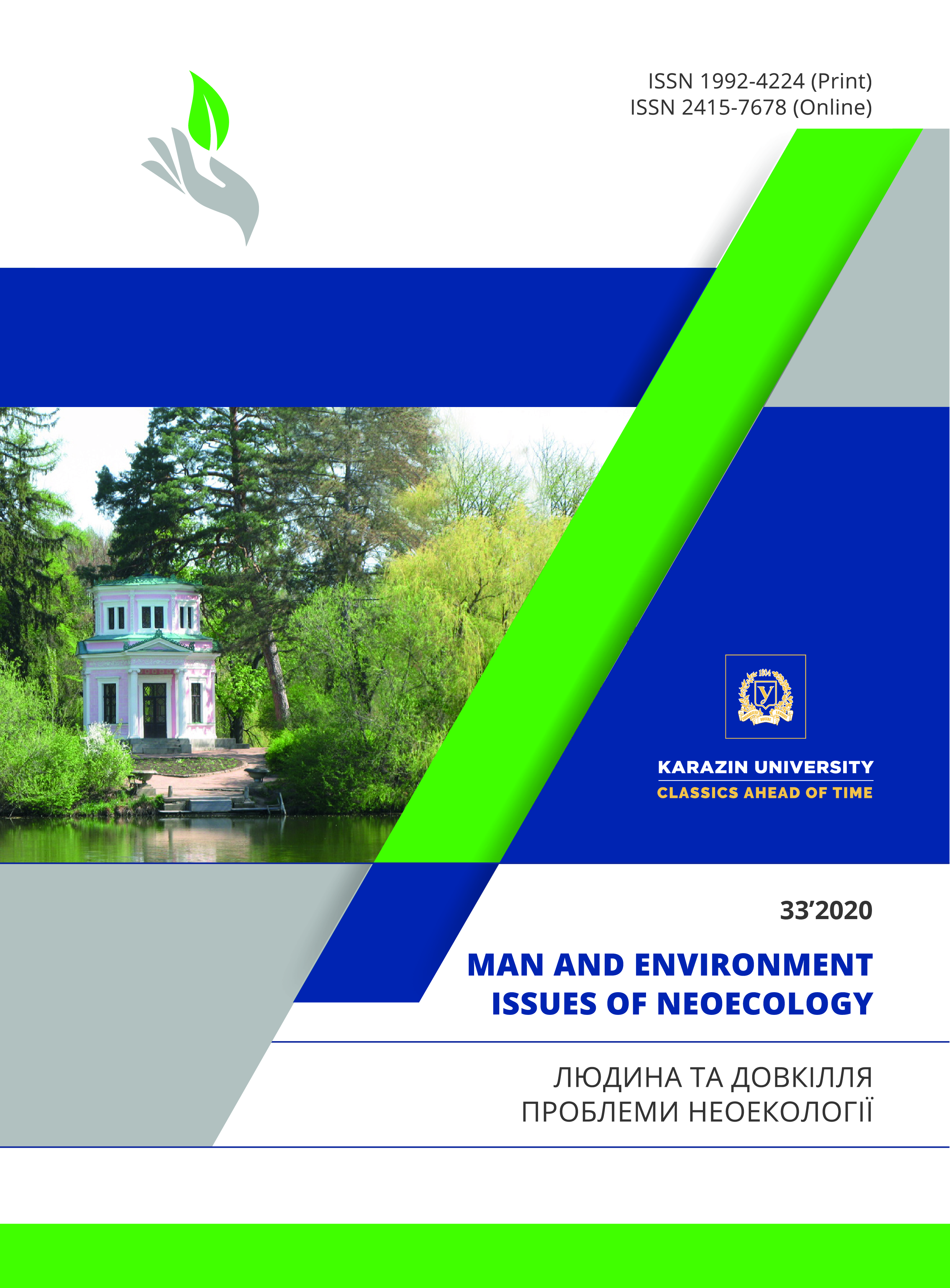Determinants of Sustainable Development: National Dimension of Environmental Kuznets Curve
Abstract
Purpose. The study objective was to model the conditions to reach the "turning point" in the environmental Kuznets curve model (EKC) for the Ukrainian economy.
Меthods. In the research general scientific (analysis and synthesis, induction and deduction, analytical grouping) and special (abstraction, modelling, etc.) methods of studying economic phenomena and processes have been used.
Results. To determine the conditions for maintaining sustainable development of the national economy, it has been proposed to use sectoral approach. It is based on the idea that to reach the sustainable turning point in the EKC model for Ukraine, key parameters of its leading economic sectors have to be managed. Such industries for Ukraine are: processing; mining and quarry development; agriculture, forestry and fisheries; supply of electricity, gas, steam and conditioned air; transport, warehousing, post and courier service. It has been proved that sustainable turning point was not reached because mining, transport, warehousing, post and courier services, agriculture, forestry and fisheries put back. It has been demonstrated that processing industry and energy are the priority sectors for the development of Ukraine's economy, because they have the predominant economic conditions to get higher added value compared with mining, and Ukraine's agricultural capacity could be used to increase wages of the sector`s staff. It has been determined that transport sector`s negative trends are explained by few environmentally friendly vehicles in Ukraine and, as a result, higher recent emissions of air pollutants.
Conclusions. It has been proved that EKC for Ukraine could be built on the basis of correlation between sulfur dioxide, nitrogen dioxide, oxide, carbon dioxide emissions and income per capita in Ukraine. It has been found out that Kuznets curve in Ukraine is "point"-like. The EKC based on correlation between emissions of air pollutants and average nominal income per capita in the leading sectors of the national economy has been proposed. It has been proved that it is possible to ensure sustainable development of Ukraine's economy by greening production within the existing structure of the national economy based on sectoral capital investment and intensification of government support policy of environment.
Downloads
References
Shubravska, O. V. (2005). Steady economic development: concept and direction of research. Economy of Ukraine, (1), 36-42 (in Ukrainian).
Alimov, O. M., Danilenko, A. I., Tregobchuk, V. M. & others. (2005). Economic development of Ukraine: institucional'ne and resource providing. Kyiv: the Incorporated institute of economy of NAN of Ukraine.
Khvesik, M. (2011). Staliy development of Ukraine: problems and prospects. Economist, (4), 8-9.
Stern, D. I. (2004). The Rise and Fall of the Environmental Kuznets Curve. World Development, 32(8), 1419–1439. Retrieved from https://doi.org/10.1016/j.worlddev.2004.03.004
Grossman, G. M. & Krueger, A. B. (1991). Environmental Impacts of a North American Free Trade Agreement. National Bureau of Economic Research Working Paper. NBER, Cambridge MA. Retrieved from https://www.nber.org/papers/w3914
Shafik, N. & Bandyopadhyay, S. (1992). Economic Growth and Environmental Quality: Time Series and Cross-Country Evidence, Background Paper for the World Development Report. The World Bank, Washington DC. Retrieved from
United Nations. (1987). Report of the World Commission on Environment and Development: Our Common Future. Retrieved from http://www.un-documents.net/wced-ocf.htm.
European Bank for Reconstruction and Development. (1992). World Development Report 1992: Development and the Environment’. Retrieved from http://wdronline.worldbank.org/worldbank/a/c.html /world_development_report_1992/front_matter/WB.0-1952-0876-5.frontmatter
Beckerman, W. (1992). Economic growth and the environment: whose growth? whose environment? World Development, 20(4), 481–496. Retrieved from https://doi.org/10.1016/0305-750X(92)90038-W
Kubatko, О. & Nilova, О. (2008). Environmental Kuznets Curve: evidence from Ukrainian data on pollution concentrations. The mechanism of economic regulation, (2), 53–67.
Tunitsa, T. Yu. (2006). Research of possibilities of adaptation of Kuznets' theory to the decision of modern ecological and economic problems of sustainable development. Forestry, forestry, paper and woodworking industries, (30), 167-177.
Khlobystov, Ie., Horoshkova, L., Kozmenko, S. & Trofymchuk, V. (2019). Econometric analysis of National Economy Sustainable Development on the basis of the Еnvironmental Kuznets curve. International Journal of Global Environmental Issues. Special Issue on: "Green Economy: Energy, Industry and Agricultural Aspects" . in print.
Horoshkova, L. A, Khlobistov, Ie. V. & Trofimchuk, V. O. (2019). The relationship between economic growth and the assimilation potential of the environment in ensuring the sustainable development of the national economy. Project management and production development, (1(69)), 24-37. Retrieved from http://www.pmdp.org.ua/images/Journal/69/3.pdf (in Ukrainian).
Horoshkova, L. A., Khlobistov, Ie. V. & Trofimchuk, V. O. (2019). Economic and statistical modeling of determinants of the dynamics of environmental pollution in Ukraine. Economics and organization of management, (2 (34)), 46-55. Retrieved from http://jeou.donnu.edu.ua/article/view/7350 (in Ukrainian).
Horoshkova, L. A., Khlobistov, Ie. V. & Trofimchuk, V. O. (2018). Financial mechanisms of sustainable use of territorial resources of natural economic systems. Theoretical and practical aspects of economics and in-tellectual property: a collection of scientific papers, (18), 275-284. Retrieved from http://nbuv.gov.ua/UJRN/Tpaeiv_2018_18_39 (in Ukrainian).
Authors reserve the right of attribution for the submitted manuscript, while transferring to the Journal the right to publish the article under the Creative Commons Attribution License 4.0 International (CC BY 4.0). This license allows free distribution of the published work under the condition of proper attribution of the original authors and the initial publication source (i.e. the Journal)
Authors have the right to enter into separate agreements for additional non-exclusive distribution of the work in the form it was published in the Journal (such as publishing the article on the institutional website or as a part of a monograph), provided the original publication in this Journal is properly referenced
The Journal allows and encourages online publication of the manuscripts (such as on personal web pages), even when such a manuscript is still under editorial consideration, since it allows for a productive scientific discussion and better citation dynamics (see The Effect of Open Access).





